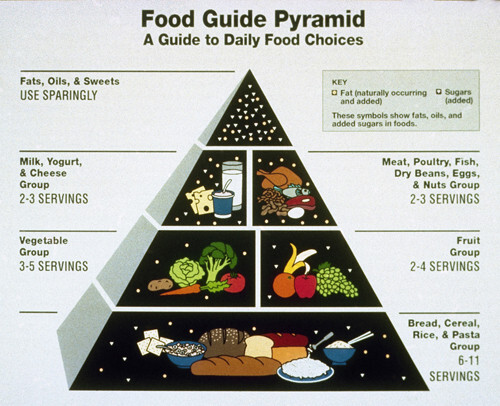One key character played a role in the 1992 Food Guide Pyramid’s structure, only her guidance varied drastically from what the USDA wanted on people’s dinner plates. Dr. Luise Light, the nutritionist who led the pyramid’s fabrication, was left in the dust after her pitch to the USDA wasn’t received how she had hoped it would be. More than small changes were applied to her model upon revision from the government entity, from recommended serving sizes down to the very wording of the descriptions that would accompany images of the food groups. Take, for instance, her suggestion of incorporating 5 to 9 servings of fruits and vegetables daily, which the USDA conveniently bumped down to 2 to 3. The wording was also altered to emphasize that eating processed foods over fresh ones wasn’t as detrimental to health as it has proven to be over time. Reduced-fat dairy and lean meats were pushed to the wayside, with an unspoken nudge to encourage the consumption of full-fat meats and dairy for government profit.

https://www.huffpost.com/entry/usda-dietary-guidelines-diabetes_n_5635554
But what was the USDA’s motivation behind such actions? Were they trolling Dr. Light?
The USDA minimized the alternative, slightly healthier choices of lean meats and low dairy options, as a way to keep full-fat products, the more profitable items, skidding through the market. Healthier choices were not as profitable as “fun foods like junk food,” as Dr. Light explains in her 2004 report, A Fatally Flawed Food Guide. Seeing an apple in a commercial did not hit consumers the same way a vibrant fruit roll-up could. She notes that the USDA, “also hugely increased the servings of wheat and other grains to make the wheat growers happy.” Dr. Light also claimed that “the meat lobby got the final word on the color of the saturated fat and cholesterol guideline which was changed from red to purple because meat producers worried that using red to signify “bad” fat would be linked to red meat in consumers’ minds.” Similarly, Dr. Light’s original, straightforward wording of “eat less” was tailored and became “avoid too much,” to remain vague in reference to how frequently processed, sugary foods high in saturated fats ought to be consumed. This allowed for more money in the junk food industry’s pockets, because they weren’t creative enough to create an engaging ad for broccoli.
How Red Flags Made Up the Food Pyramid
Source: Pinoy Daily News

0 Comments